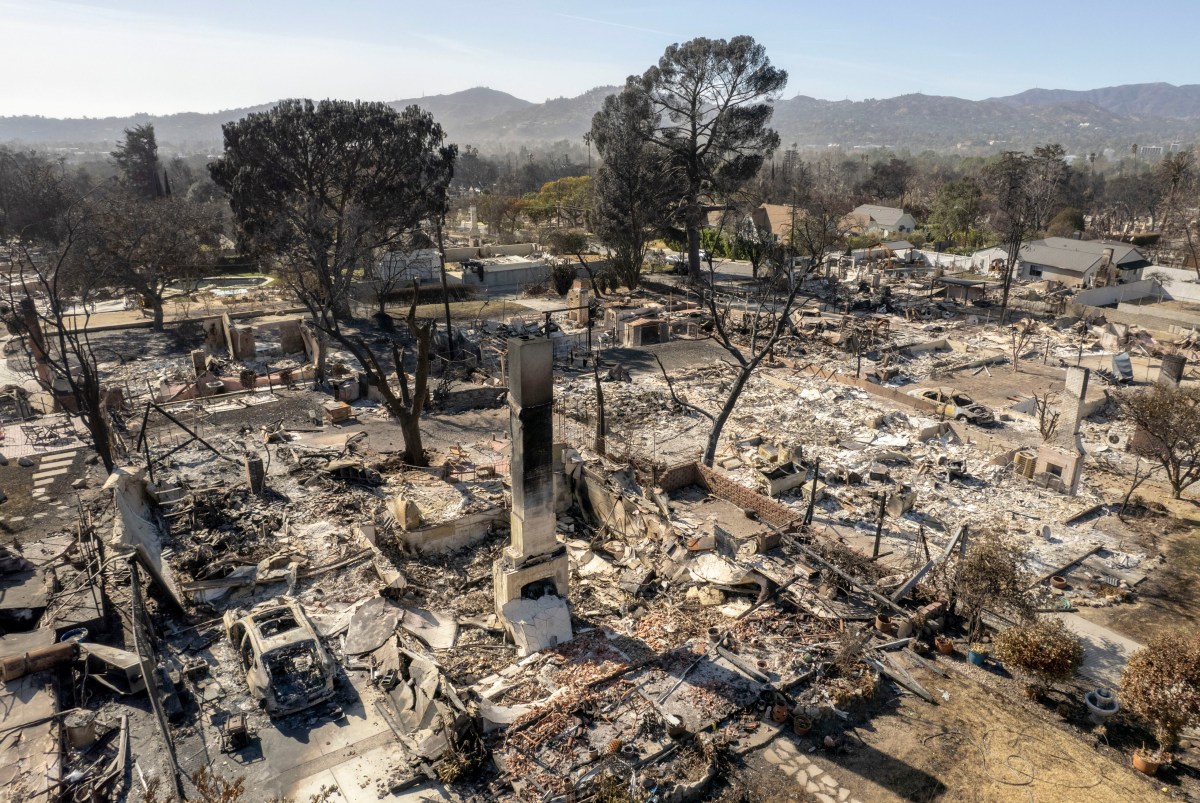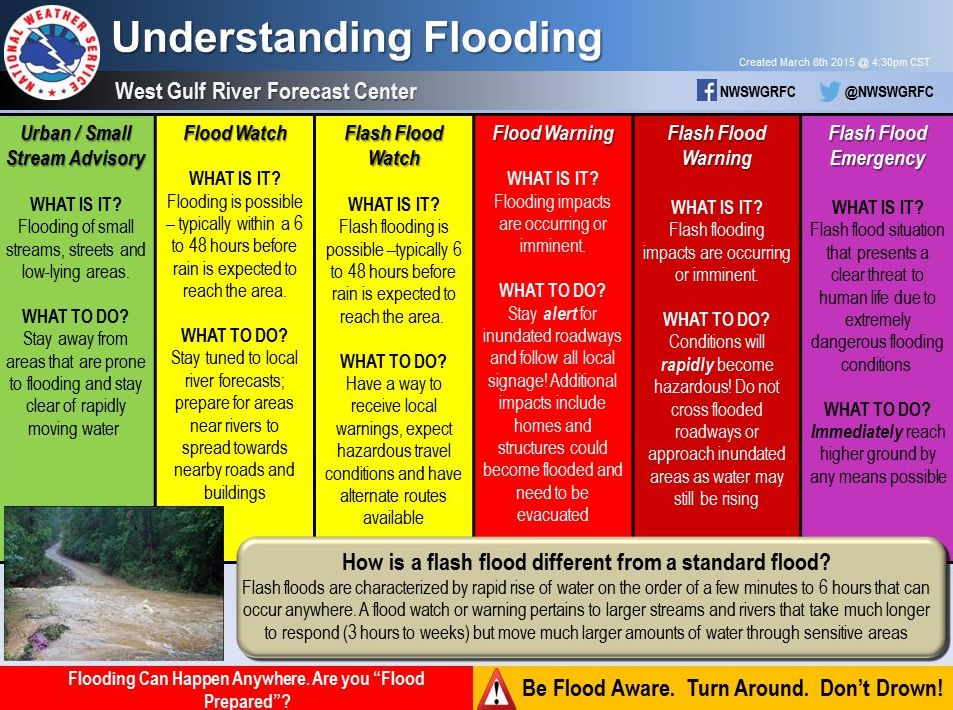Severe Weather Awareness Week Day 5: Flood Safety Tips And Preparedness

Table of Contents
Severe Weather Awareness Week highlights the importance of being prepared for various weather emergencies. Today, we focus on floods, a devastating natural disaster that can strike with little warning, causing significant damage and posing serious risks to life and property. Understanding flood safety and preparedness is crucial for minimizing these risks and protecting your loved ones. This guide provides essential tips to ensure you and your family are ready to face the potential dangers of flooding.
Understanding Flood Risks and Your Area
Knowing your risk is the first step in effective flood safety. Understanding your location's vulnerability to different types of flooding is vital for creating a robust preparedness plan.
Identifying Flood Prone Areas
Determine if your home or business is located in a high-risk flood zone. This information is crucial for understanding your likelihood of experiencing a flood.
- Utilize flood risk assessment tools: Many online resources, such as the FEMA Flood Map Service (Flood Map Service Center), allow you to enter your address and see your flood risk level. This service provides valuable insights into your property's flood vulnerability.
- Understand historical flood data for your region: Research past flood events in your area. Local authorities and historical records often provide this information, giving you a better sense of the frequency and severity of past floods.
- Consider factors like proximity to rivers, streams, and low-lying areas: Homes and businesses near water bodies are inherently more susceptible to flooding. The closer you are, the greater your risk.
Different Types of Floods
Recognizing the different types of floods helps in tailoring your preparedness strategy. Each type presents unique challenges and requires a slightly different approach.
- Flash floods: These are rapid, often unexpected floods that occur in a short period. They are particularly dangerous due to their sudden onset and swift current. Flash flood warnings should be taken extremely seriously.
- River floods: These floods develop more gradually as rivers and streams overflow their banks. While they often provide more time for preparation, they can still cause significant damage and disruption. River flood watches are important to heed.
- Coastal floods: These floods are usually caused by storm surges, high tides, and severe weather events impacting coastal areas. Coastal residents need specific preparedness strategies, including understanding evacuation zones and routes.
Creating a Flood Preparedness Plan
Proactive planning is key to mitigating the impact of a flood. Developing a comprehensive plan ensures you're ready to respond effectively in an emergency.
Developing an Evacuation Plan
Having a well-rehearsed evacuation plan is critical. Knowing your routes and having a designated meeting point are essential.
- Identify multiple escape routes: Don't rely on just one route. Consider alternative paths in case your primary route is blocked.
- Designate an out-of-area contact person: This person serves as a central point of contact for family members to check in after a flood.
- Pack an emergency go-bag with essential supplies: This bag should contain non-perishable food, water, a first-aid kit, medications, flashlights, extra batteries, and vital documents (stored in waterproof bags).
Assembling an Emergency Go-Bag
This is your lifeline during a flood. Ensure it’s readily accessible and contains everything you and your family will need in the immediate aftermath.
- Include waterproof bags for documents and electronics: Protect essential paperwork and electronics from water damage.
- Consider pet supplies if you have animals: Remember your furry friends! Include food, water, leashes, and carriers for your pets.
- Keep the go-bag in an easily accessible location: It should be readily available in case of a sudden evacuation.
Protecting Your Property
Take steps to safeguard your property from flood damage before a flood occurs.
- Elevate valuable items: Move important possessions to upper floors or a safe, dry place.
- Install flood barriers or sandbags if necessary: These can help to protect your property from rising waters.
- Consider purchasing flood insurance: Even if you're not in a high-risk zone, flood insurance can offer critical financial protection. Many homeowners insurance policies do not cover flood damage.
Staying Safe During a Flood
Your actions during a flood are crucial for your safety. Prioritize safety and follow instructions from emergency personnel.
Evacuate Immediately
If authorities order an evacuation, leave immediately. Never attempt to drive through floodwaters.
- Turn around, don't drown: This is the most critical safety guideline. Floodwaters can be deceptively deep and fast-moving.
- Obey all evacuation orders from authorities: Emergency personnel are trained to assess the risk. Their instructions are paramount.
- Seek higher ground if evacuation is not possible: Find a safe, elevated location until the floodwaters recede.
Safe Behavior During Flooding
Floodwaters pose numerous dangers. Stay aware of your surroundings and exercise caution.
- Be cautious of contaminated water: Floodwater can contain dangerous bacteria and debris. Avoid contact whenever possible.
- Watch out for weakened bridges and roads: These structures can be compromised during a flood and become unstable.
- Avoid floodwaters that are moving rapidly: Fast-moving water can quickly sweep you away.
What to Do After the Flood
Returning home after a flood requires careful consideration. Inspect for damage and contact authorities for assistance.
- Check for structural damage and gas leaks: Ensure your home is safe before entering.
- Avoid contact with floodwater without protective gear: Wear boots, gloves, and other protective gear to prevent exposure to contaminants.
- Document damage for insurance purposes: Take photos and videos of the damage to support your insurance claim.
Conclusion
Severe Weather Awareness Week underscores the importance of flood safety and preparedness. By understanding flood risks in your area, creating a comprehensive preparedness plan including an evacuation plan and emergency kit, and following safety guidelines during and after a flood, you can significantly reduce the potential for harm and property damage. Remember to check your flood risk using online resources, assemble your emergency kit, and practice your evacuation plan regularly. Don’t wait until it’s too late – prioritize your flood safety and preparedness today. Learn more about improving your flood safety and preparedness by visiting your local emergency management agency's website.

Featured Posts
-
 Alberto De Monaco Sus Mellizos Reciben La Primera Comunion
May 25, 2025
Alberto De Monaco Sus Mellizos Reciben La Primera Comunion
May 25, 2025 -
 Analyzing The Implications Of Betting On The Los Angeles Wildfires
May 25, 2025
Analyzing The Implications Of Betting On The Los Angeles Wildfires
May 25, 2025 -
 Nws Flood Safety Advice Active Flood Warning This Morning
May 25, 2025
Nws Flood Safety Advice Active Flood Warning This Morning
May 25, 2025 -
 European Shares Rise On Trumps Tariff Hint Lvmh Falls
May 25, 2025
European Shares Rise On Trumps Tariff Hint Lvmh Falls
May 25, 2025 -
 Artfae Daks Alalmany Ila 24 Alf Nqtt Bfdl Atfaq Jmrky Byn Washntn Wbkyn
May 25, 2025
Artfae Daks Alalmany Ila 24 Alf Nqtt Bfdl Atfaq Jmrky Byn Washntn Wbkyn
May 25, 2025
